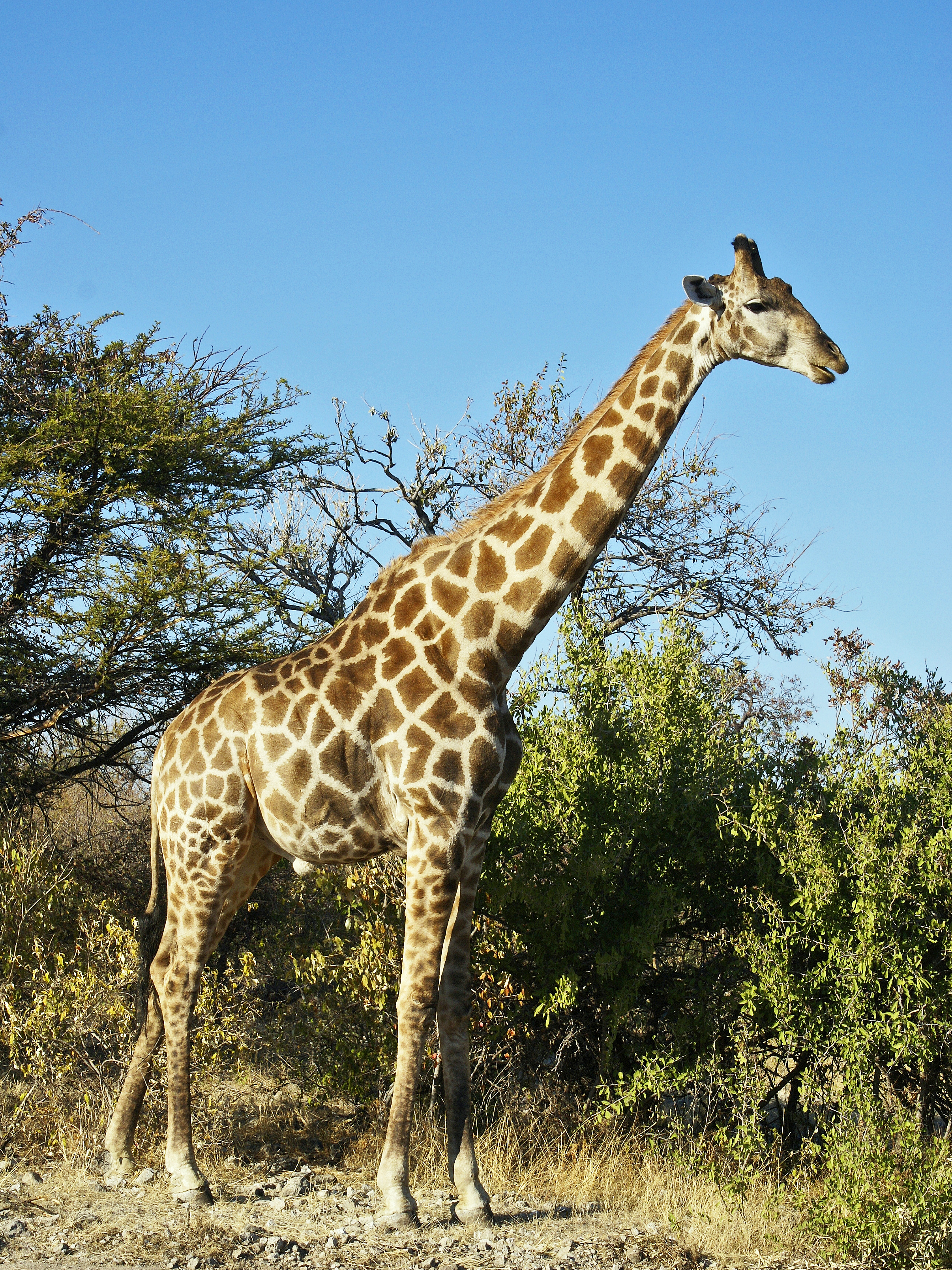Darwin and Wallace papers
25 Wallace’s manuscript
III. On the Tendency of Varieties to depart indefinitely from the Original Type. By ALFRED RUSSEL WALLACE.
“It will be observed that this argument rests entirely on the assumption, that varieties occurring in a state of nature are in all respects analogous to or even identical with those of domestic animals, and are governed by the same laws as regards their permanence or further variation. But it is the object of the present paper to show that this assumption is altogether false, that there is a general principle in nature which will cause many varieties to survive the parent species, and to give rise to successive variations departing further and further from the original type, and which also produces, in domesticated animals, the tendency of varieties to return to the parent form.”
A struggle for existence
“The life of wild animals is a struggle for existence. The full exertion of all their faculties and all their energies is required to preserve their own existence and provide for that of their infant offspring. The possibility of procuring food during the least favourable seasons, and of escaping the attacks of their most dangerous enemies, are the primary conditions which determine the existence both of individuals and of entire species. These conditions will also determine the population of a species; and by a careful consideration of all the circumstances we may be enabled to comprehend, and in some degree to explain, what at first sight appears so inexplicable—the excessive abundance of some species, while others closely allied to them are very rare.”
“The greater or less fecundity of an animal is often considered to be one of the chief causes of its abundance or scarcity; but a consideration of the facts will show us that it really has little or nothing to do with the matter. Even the least prolific of animals would increase rapidly if unchecked, whereas it is evident that the animal population of the globe must be stationary, or perhaps, through the influence of man, decreasing. Fluctuations there may be; but permanent increase, except in restricted localities, is almost impossible. For example, our own observation must convince us that birds do not go on increasing every year in a geometrical ratio, as they would do, were there not some powerful check to their natural increase.”
“With such powers of increase the population must have reached its limits, and have become stationary, in a very few years after the origin of each species. It is evident, therefore, that each year an immense number of birds must perish—as many in fact as are born; and as on the lowest calculation the progeny are each year twice as numerous as their parents, it follows that, whatever be the average number of individuals existing in any given country, twice that number must perish annually,—a striking result, but one which seems at least highly probable, and is perhaps under rather than over the truth.”
“It appears evident, therefore, that so long as a country remains physically unchanged, the numbers of its animal population cannot materially increase. If one species does so, some others requiring the same kind of food must diminish in proportion. The numbers that die annually must be immense; and as the individual existence of each animal depends upon itself, those that die must be the weakest—the very young, the aged, and the diseased,—while those that prolong their existence can only be the most perfect in health and vigour—those who are best able to obtain food regularly, and avoid their numerous enemies. It is, as we commenced by remarking, “a struggle for existence,” in which the weakest and least perfectly organised must always succumb.”
Wallace establishes the argument
“Now it is clear that what takes place among the individuals of a species must also occur among the several allied species of a group,—viz. that those which are best adapted to obtain a regular supply of food, and to defend themselves against the attacks of their enemies and the vicissitudes of the seasons, must necessarily obtain and preserve a superiority in population; while those species which from some defect of power or organisation are the least capable of counteracting the vicissitudes of food, supply, &c., must diminish in numbers, and, in extreme cases, become altogether extinct.”
“If now we have succeeded in establishing these two points—
1st, that the animal population of a country is generally stationary, being kept down by a periodical deficiency of food, and other checks; and,
2nd, that the comparative abundance or scarcity of the individuals of the several species is entirely due to their organisation and resulting habits, which, rendering it more difficult to procure a regular supply of food and to provide for their personal safety in some cases than in others, can only be balanced by a difference in the population which have to exist in a given area—
we shall be in a condition to proceed to the consideration of varieties, to which the preceding remarks have a direct and very important application.”
The variety replaces the species
“Most or perhaps all the variations from the typical form of a species must have some definite effect, however slight, on the habits or capacities of the individuals. Even a change of colour might, by rendering them more or less distinguishable, affect their safety; a greater or less development of hair might modify their habits. More important changes, such as an increase in the power or dimensions of the limbs or any of the external organs, would more or less affect their mode of procuring food or the range of country which they inhabit.”
“If … any species should produce a variety having slightly increased powers of preserving existence, that variety must inevitably in time acquire a superiority in numbers.”
“Now, let some alteration of physical conditions occur in the district—a long period of drought, a destruction of vegetation by locusts, … —any change in fact tending to render existence more difficult to the species in question, and tasking its utmost powers to avoid complete extermination; it is evident that, of all the individuals composing the species, those forming the least numerous and most feebly organised variety would suffer first, and, were the pressure severe, must soon become extinct.”
“The superior variety would then alone remain, and on a return to favourable circumstances would rapidly increase in numbers and occupy the place of the extinct species and variety.”
“The variety would now have replaced the species, of which it would be a more perfectly developed and more highly organised form. It would be in all respects better adapted to secure its safety, and to prolong its individual existence and that of the race. Such a variety could not return to the original form; for that form is an inferior one, and could never compete with it for existence.”
“But this new, improved, and populous race might itself, in course of time, give rise to new varieties, exhibiting several diverging modifications of form, any of which, tending to increase the facilities for preserving existence, must, by the same general law, in their turn become predominant. Here, then, we have progression and continued divergence deduced from the general laws which regulate the existence of animals in a state of nature … “
Wallace’s new hypothesis
“The hypothesis of Lamarck—that progressive changes in species have been produced by the attempts of animals to increase the development of their own organs, and thus modify their structure and habits—has been repeatedly and easily refuted by all writers on the subject of varieties and species”
“the view here developed renders such an hypothesis quite unnecessary, by showing that similar results must be produced by the action of principles constantly at work in nature.
“Neither did the giraffe acquire its long neck by desiring to reach the foliage of the more lofty shrubs, and constantly stretching its neck for the purpose, but because any varieties which occurred among its antitypes with a longer neck than usual at once secured a fresh range of pasture over the same ground as their shorter-necked companions, and on the first scarcity of food were thereby enabled to outlive them. Even the peculiar colours of many animals, especially insects, so closely resembling the soil or the leaves or the trunks on which they habitually reside, are explained on the same principle; for though in the course of ages varieties of many tints may have occurred, yet those races having colours best adapted to concealment from their enemies would inevitably survive the longest.”

Wallace’s concluding statement
“We believe we have now shown that there is a tendency in nature to the continued progression of certain classes of varieties further and further from the original type—a progression to which there appears no reason to assign any definite limits—and that the same principle which produces this result in a state of nature will also explain why domestic varieties have a tendency to revert to the original type. This progression, by minute steps, in various directions, but always checked and balanced by the necessary conditions, subject to which alone existence can be preserved, may, it is believed, be followed out so as to agree with all the phenomena presented by organised beings, their extinction and succession in past ages, and all the extraordinary modifications of form, instinct, and habits which they exhibit.”
Ternate, February, 1858.
Final reflection
Now that you have read the extract and letters from Darwin and Wallace, how would you compare and contrast their writings and discoveries?
If you would like to read the full text of the papers by Darwin and Wallace, visit Darwin Online.

